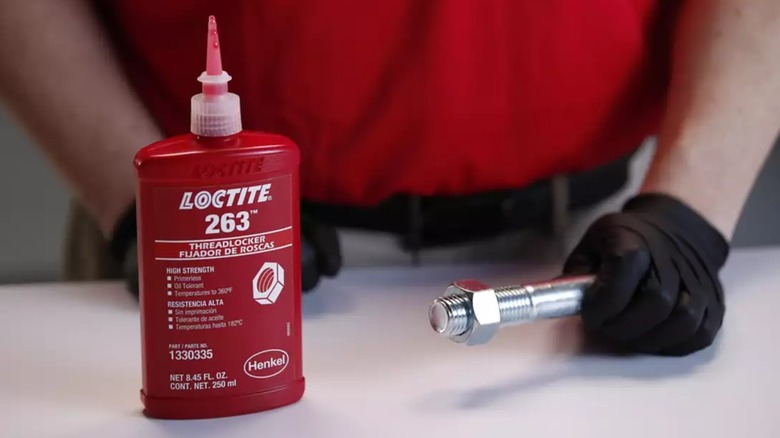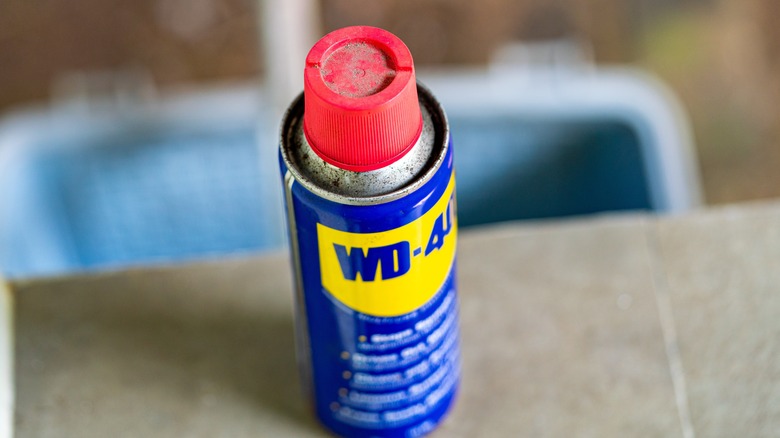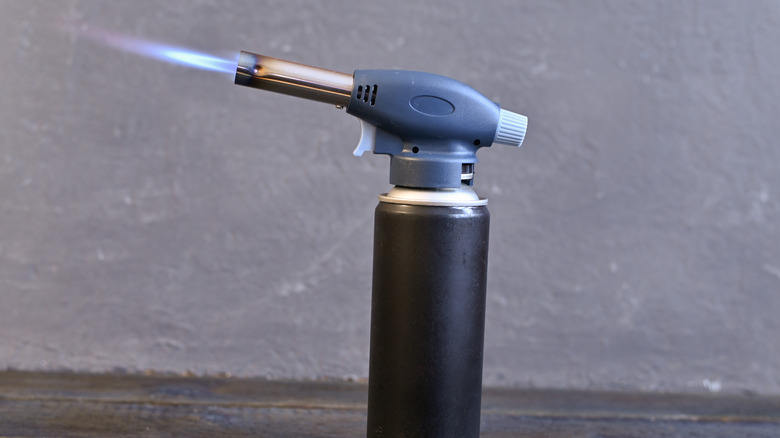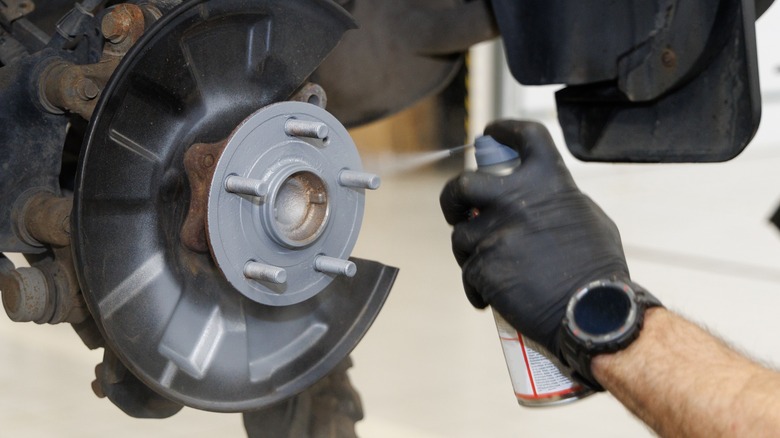Can WD-40 Defeat Loctite? Here's What You Need To Do To Release A Screw From Threadlocker
The various nuts and bolts that hold mechanical projects together are susceptible to spontaneous loosening, no matter how tightly you ratchet them down. This is because subtle vibrations from external or internal sources such as the rotational force of an engine ever-so-slightly nudges the screws up on their threads. To prevent this from happening, you can employ a sealing substance like Henkel's Loctite red threadlocker. This nifty goo can be drizzled into a screw's threading, sealing it in place with vibration-resistant cushioning.
Red threadlocker is meant to be a semi-permanent solution for slipping fasteners, but in the event you've got a screw that needs to come out, things can get a bit complicated. That stuff holds fast, whether you want it to or not. If you've got a gunked-up screw you want back, you might be tempted to reach for that classic staple of garage lubrication, WD-40. You may end up finding, however, that this process is a little more complicated than a quick spritz.
WD-40 isn't enough to remove red threadlocker
Unfortunately, WD-40 can't dissolve red threadlocker and remove a screw from its goopy grip. WD-40 is technically a solvent, which means it can dissolve the bonds between sticky substances and loosen them to the point that they can be simply wiped off. This is why WD-40 works for removing simple adhesives like super glue.
Red threadlocker, however, is no simple adhesive. It's a high-strength substance designed to hold fasteners in place more or less indefinitely, as opposed to simple glue, which can chip away with the passage of time. WD-40 is simply a penetrating oil, rather than a full-on solvent. Threadlocker is specially-formulated to be resistant to penetrating oils. Spraying WD-40 into the gap might make the surface of the threadlocker a little goopy, but it'll still hold tight to those fastener threads. Trying to remove the threadlocker in that state is more likely to strip the top than pull it out.
Red threadlocker can be removed with heat application
If WD-40 is out, how are you supposed to reclaim a fastener from the clutches of red threadlocker? As it happens, threadlocker does have one potent weakness: heat. Red threadlocker is heat-locked, which means that exposing it to a sufficiently high, concentrated level of heat will loosen it up enough to remove the screw.
To do this, you're going to need a powerful, portable source of heat, such as a high-strength heat gun or a fuel-filled butane torch. We're looking for temperatures of around 500 to 550 degrees Fahrenheit here. Hold the tip of your heat-emission tool near the top of the fastener so it's getting the full, focused force. Keep it there for around two minutes, enough to heat the whole fastener through. Once it's in this state, use a compatible wrench or driver to safely unthread the fastener from its assembly.
Once the fastener is out, there will probably still be some threadlocker goop on it. You can remove it with a spray of a sufficiently-powerful solvent, such as Henkel's own Loctite paint stripper, plus a bit of mechanical abrasion.
Red threadlocker can be removed with a combination of workshop tools and solvents
Let's say you've got a screw you need to reclaim from threadlocker within some material that can't sustain heat. This is a question many tinkerers have grappled with, but with the right tools, you can still remove that fastener even without heat.
First, you're going to need a more potent solvent than WD-40. For many, a regular can of sprayable brake cleaner works best here. Additionally, you'll want a compatible tool for the fastener you're working with (drivers for screws, wrenches for bolts, etc.), plus a small rag for mopping up excess solvent.
Make sure the fastener is facing up, and give it a quick spray with the brake cleaner. You want just enough to completely cover it, but not so much it's dripping off the sides. Be sure to use your rag to mop up any excess, because using brake parts cleaner around places like the engine can lead to hazards. Once the fastener is properly soaked, leave it overnight to loosen up. Afterward, use your compatible tool to unthread it. You'll need a strong hand, as it'll still be in there pretty tight. If you're working with bolts, you might also need to screw on a couple of nuts just to give your wrench some extra grip.



